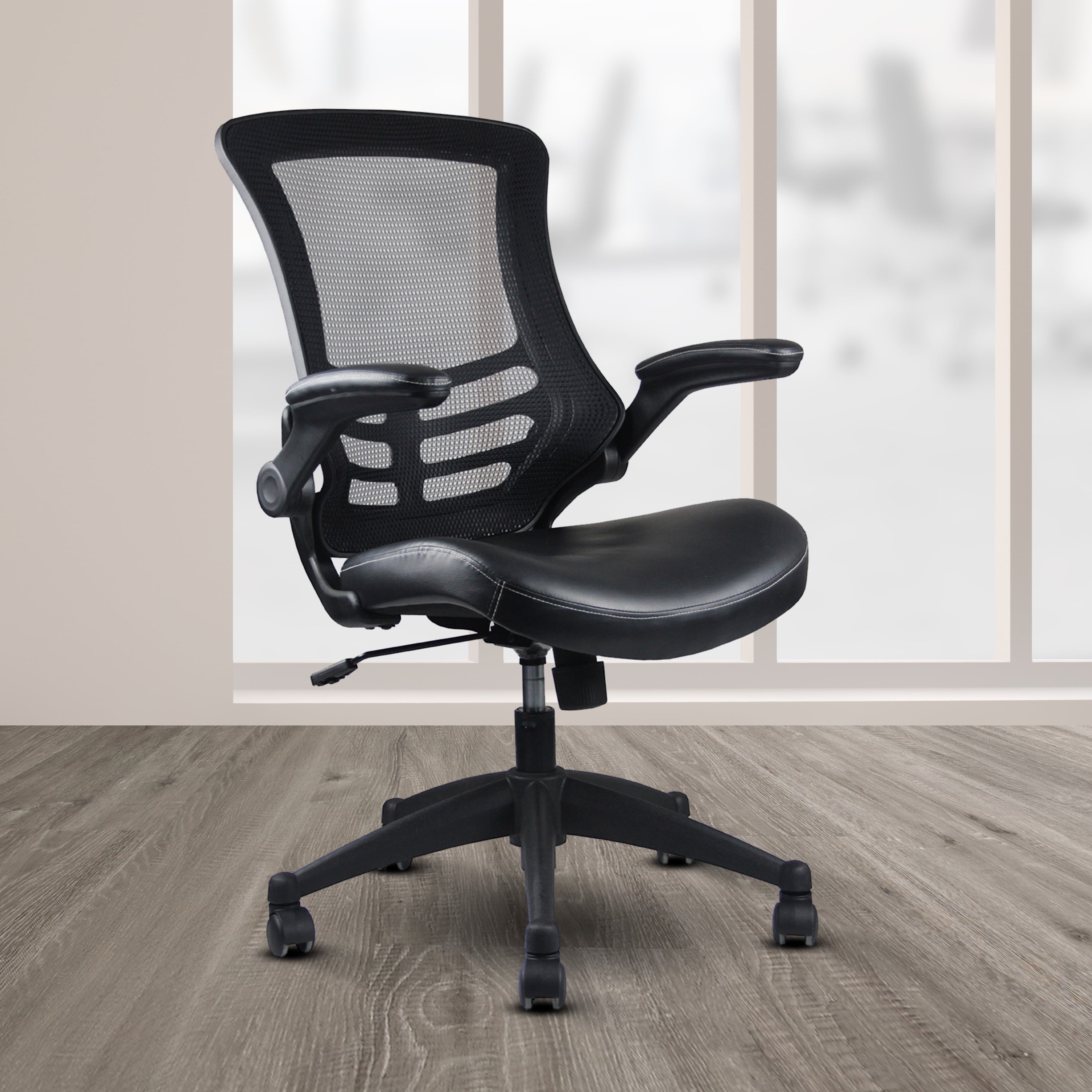Workspace Design and Functionality: Desk Chair Arms Or No Arms

Choosing between a desk chair with or without armrests significantly impacts your workspace’s ergonomics and overall productivity. The ideal choice depends heavily on your individual workspace setup and the tasks you regularly perform. Let’s explore how different workspace designs interact with armrests.
Workspace Setup and Armrest Suitability
The presence or absence of armrests can dramatically affect comfort and efficiency. Consider these factors when choosing a chair.
| Workspace Type | Chair Type Recommendation | Rationale | Potential Issues |
|---|---|---|---|
| Traditional Desk (seated) | Chair with armrests | Provides lumbar support and armrest for typing and mouse use, reducing strain. | Armrests might hinder movement if the desk is too small or if you frequently need to slide under the desk. |
| Standing Desk (primarily standing, occasional sitting) | Chair without armrests (or with adjustable armrests) | Allows for easy transition between standing and sitting. Armrests can be obstructive when standing. Adjustable armrests offer flexibility. | Lack of armrests might cause discomfort during prolonged sitting. |
| Shared Workspace (hot-desking) | Chair without armrests | Easier to adjust and share, and less likely to interfere with other users. | Lack of arm support can cause fatigue during extended work periods. |
Task Performance and Armrest Interaction, Desk chair arms or no arms
The impact of armrests varies depending on the task.
Typing: Armrests provide support for forearms, reducing shoulder and neck strain during prolonged typing sessions. However, overly high armrests can force an unnatural posture. The ideal armrest height allows the elbows to be at a 90-degree angle when typing.
Writing: Armrests can be beneficial for writing, offering support for the forearms and reducing fatigue. However, they can hinder the movement needed for certain writing styles or if using a large writing surface.
Mouse Use: Armrests offer support for the forearms, minimizing strain on the wrists and shoulders. However, poorly positioned armrests can interfere with mouse movement, leading to discomfort and inefficiency. The armrest should allow for comfortable and unrestricted mouse movement.
Desk Chair Selection Guide
Selecting a chair hinges on your workspace and work habits.
Consider desk height: Ensure the desk is at an appropriate height for your seated posture, allowing for proper elbow and wrist angles.
Assess keyboard and mouse placement: Optimal placement minimizes strain. Armrests should complement this, not hinder it.
Evaluate workspace dimensions: A chair with armrests might not be suitable if your workspace is cramped. Sufficient legroom and clearance around the desk are crucial.
Measure your body: Chair height, backrest support, and armrest height should align with your body’s dimensions for maximum comfort and support. Consider adjustable armrests for greater adaptability. If you spend a lot of time standing, a chair without armrests might be preferable. For those who predominantly sit, armrests are generally beneficial, providing support and reducing fatigue.
Personal Preferences and User Needs

Choosing between a desk chair with or without armrests is way more personal than you might think. It’s not just about ergonomics; it’s about finding what feels *right* for your body and how you work. Think of it like choosing your perfect pair of sneakers – one size doesn’t fit all!
Armrests can be a total game-changer depending on your individual needs and preferences. Your height, build, and even your work style all play a role in whether armrests are a boon or a bane.
Armrest Preferences and Body Type
Body size and posture significantly influence armrest preference. Taller individuals might find armrests too low, causing shoulder hunching and discomfort. Shorter individuals might find them perfectly placed, offering welcome support. Similarly, those with broader shoulders might appreciate the extra support, while those with narrower frames might find armrests restrictive or in the way. For example, a person who’s 6’4″ might struggle with a standard chair’s armrests, constantly feeling cramped. In contrast, someone who’s 5’2″ might find them crucial for proper posture and reducing strain. Consider someone who spends their day coding; armrests could be a lifesaver, providing support while typing. But a graphic designer who frequently uses a drawing tablet might find them obstructive, preferring the freedom of arm movement.
Customization and Adjustability
The level of customization available greatly impacts user experience. Chairs with armrests offer a wider range of adjustments, enhancing comfort and ergonomics.
- Height Adjustment: Allows users to position armrests at a comfortable height, reducing strain on shoulders and elbows. This is especially beneficial for people of different heights or those who switch between sitting and standing.
- Width Adjustment: Provides a more personalized fit, accommodating different shoulder widths and preventing discomfort or pressure points. Think of this as fine-tuning your support for ultimate comfort.
- Angle Adjustment: Enables users to tilt the armrests slightly, further optimizing posture and support. This is less common but can make a real difference in overall comfort.
- Armrest Removal: Some chairs allow you to completely remove the armrests, offering flexibility for users who prefer armrest-free setups or need to easily maneuver their chair.
Chairs without armrests offer less adjustability, but their simplicity can be a plus for some users. The lack of armrests can promote better posture for some by encouraging them to sit upright. However, this can also be a drawback if it leads to increased strain. It’s all about finding what works for you.
